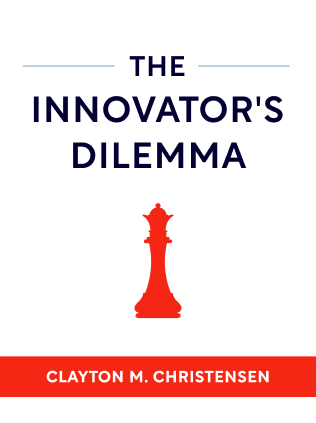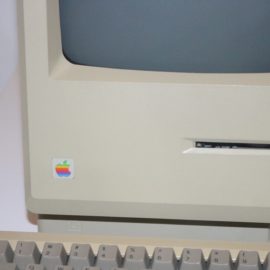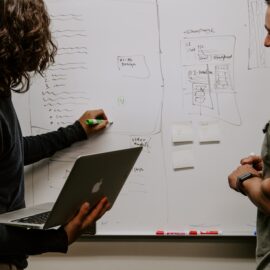

This article is an excerpt from the Shortform summary of "The Innovator's Dilemma" by Clayton M. Christensen. Shortform has the world's best summaries of books you should be reading.
Like this article? Sign up for a free trial here .
What are the keys to understanding innovation? Are there questions you should be able to answer?
Understanding innovation is a process that requires you to think about the established markets and how they can be disrupted. Innovations build on product life cycles and can bring meaningful success.
Keep reading for 22 questions for understanding innovation, grouped by key topic area.
Identifying and Understanding Innovations That are Disruptions
Disruptive innovations are all around us. Recognizing them and their impact will help you deal with them in business.
—-
- What is one example of a disruptive innovation that has either affected the industry you work in or impacted your daily life?
- How did the established market operate before the disruption?
- What was the emerging market the disruptive technology initially targeted?
- How has the disruptive innovation affected the established market?
- Think of the top companies in that industry. Are they established or entrant companies?
Navigating a Disruption
How would you lead your company through a disruptive innovation? Understanding innovation with the questions below is critical for that.
- Imagine you’re the leader of an established company and a new innovation is emerging in your industry that threatens your current business. First, how would you determine whether or not it’s disruptive?
- Now imagine that you’ve determined that the innovation is disruptive, and you decide that you want to spin-out an independent entity dedicated to the innovation. How do you make the case for investing in a risky, uncertain venture to your skeptical board of directors?
- How involved would you be in the independent organization?
- How would you ensure the entity was truly independent from the main organization (for example, staffing a dedicated team or putting the operation in a different physical location)?
Understanding Innovation Successes Are Relative
A company’s profits and achievements are relative to the organization’s overall size and level of success.
—-
- If you’ve been with your company for a while, what was a milestone achievement that the company reached during your first year? If you can’t remember specifically, what was the nature of the company’s goals and achievements?
- How does that compare with the kinds of goals the company sets and accomplishments it celebrates now?
- How would company leaders react now if you pitched a project that would bring the level of success you described in your first answer?
- How would you pitch a project like this to managers if it were also tied to a disruptive innovation?
- If your company is currently working on a disruptive project, how have company leaders approached this project differently than other projects?
Practice Making a Learning-Based Strategy
Use this exercise to practice creating a learning-based strategy for launching a disruptive product and understanding innovation.
—-
- Describe a possible disruptive product—feasible or far-fetched.
- Imagine you’re creating a strategy for developing, producing, and marketing this product. What information do you currently lack regarding how to execute this project?
- What is the information you absolutely need to know in order to execute this project?
- Of that information, what do you need to know first?
- How could you find that information?
Understanding Innovation in the Context of Product Life Cycles
Your purchasing decisions reveal where a product is in its life cycle. Understanding innovation requires understanding product life cycles.
- What was the last big purchase you made?
- What was your primary reason for choosing the product you bought over its competitors? Was it based on performance, reliability, convenience, or price?
- If you’ve bought a product like this in the past (for example, if this was a replacement or upgrade), on which attribute did you base that purchase?

———End of Preview———
Like what you just read? Read the rest of the world's best summary of Clayton M. Christensen's "The Innovator's Dilemma" at Shortform .
Here's what you'll find in our full The Innovator's Dilemma summary :
- Christensen's famous theory of disruptive innovation
- Why incumbent companies often ignore the disruptive threat, then move too slowly once the threat becomes obvious
- How you can disrupt entire industries yourself






